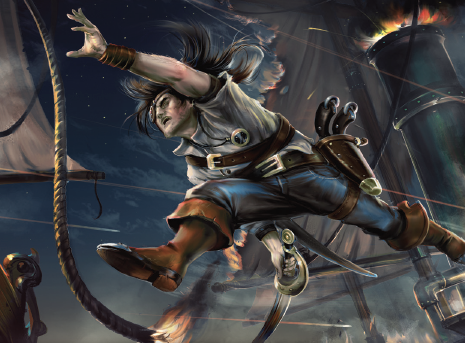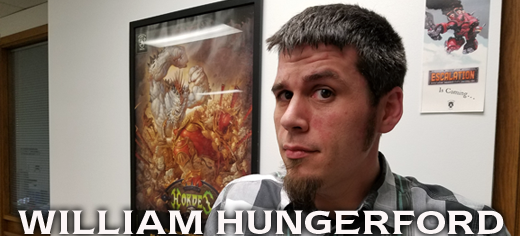For a few months now, ambitious crews of scavengers have been picking Thunderhead Fortress, the Arena found in the Riot Quest starter box, completely clean. Well, then, it’s time for a change of scenery!
Early in the development of Riot Quest, we decided to offer multiple game maps for players to enjoy. We wanted each map to feel very different from previous offerings and to offer a unique gameplay experience. This meant that not all maps would be the same size or shape, wouldn’t feature the same kinds of hexes, and all sorts of other variables. When the discussion came to what the second map for the game would be and how it should differ from Thunderhead Fortress, the answer came quickly: Let’s do some pirate $%#&!
We briefly considered making a map shaped like one large pirate ship, but that didn’t quite shake things up enough. Thunderhead is already more a traditional gladiatorial arena—a big open space with various obstacles and elements to interact with—but it has no choke points or tight corridors to have to consider. The solution to this problem presented itself fairly quickly: instead of just one large ship, let’s do two smaller ships connected by a gangplank!
The very first version of Hullgrinder featured one gangplank instead of three. It was also much wider, being three hexes wide at all points. Each ship had three Spawn Gates and three Treasure Beacons, and the only map element of note on the bigger gangplank was the center hex. The issue we found was that the single larger gangplank affected model movement in ways that weren’t exactly what we wanted. Getting from one ship to the other was too easy for Heroes near the middle of either ship and far too hard for Heroes near the outer edges.
The next iteration replaced the single large gangplank with the three thinner gangplanks almost exactly as you see them in the final version. Playtest results immediately showed more engaging movement decisions, including the ability for players to body block a gangplank with a couple of their Heroes to deny their opponents access to specific areas of a ship. The only real change we made during this testing was to separate the three gangplanks one hex farther apart than we had originally placed them, making travel from one ship to another at the far ends a bit more accessible.
The final iteration of Hullgrinder saw two of the Treasure Beacons move off of the ships and into the water near the outer gangplanks. While the planks were doing their job of acting as proper chokepoints, in some games there wasn’t always a good reason to want to cross to the other ship. Sometimes, in the insanity that is Riot Quest, a player could do everything they needed to right where they spawned.
By moving a Treasure Beacon off of each ship, it not only opened up a bit of breathing room for model movement on the ships themselves but also created a strong reason for a Hero to cross a gangplank when a Treasure Chest spawned in the water.
We’re already working on the next maps coming out for Riot Quest in 2020 and, of course, loads more models and expansions for your enjoyment. Oh, and if you’re chomping at the bit to play on the sweet neoprene that the Hullgrinder is printed on, don’t forget that you can pick up Thunderhead Fortress on the same material!





